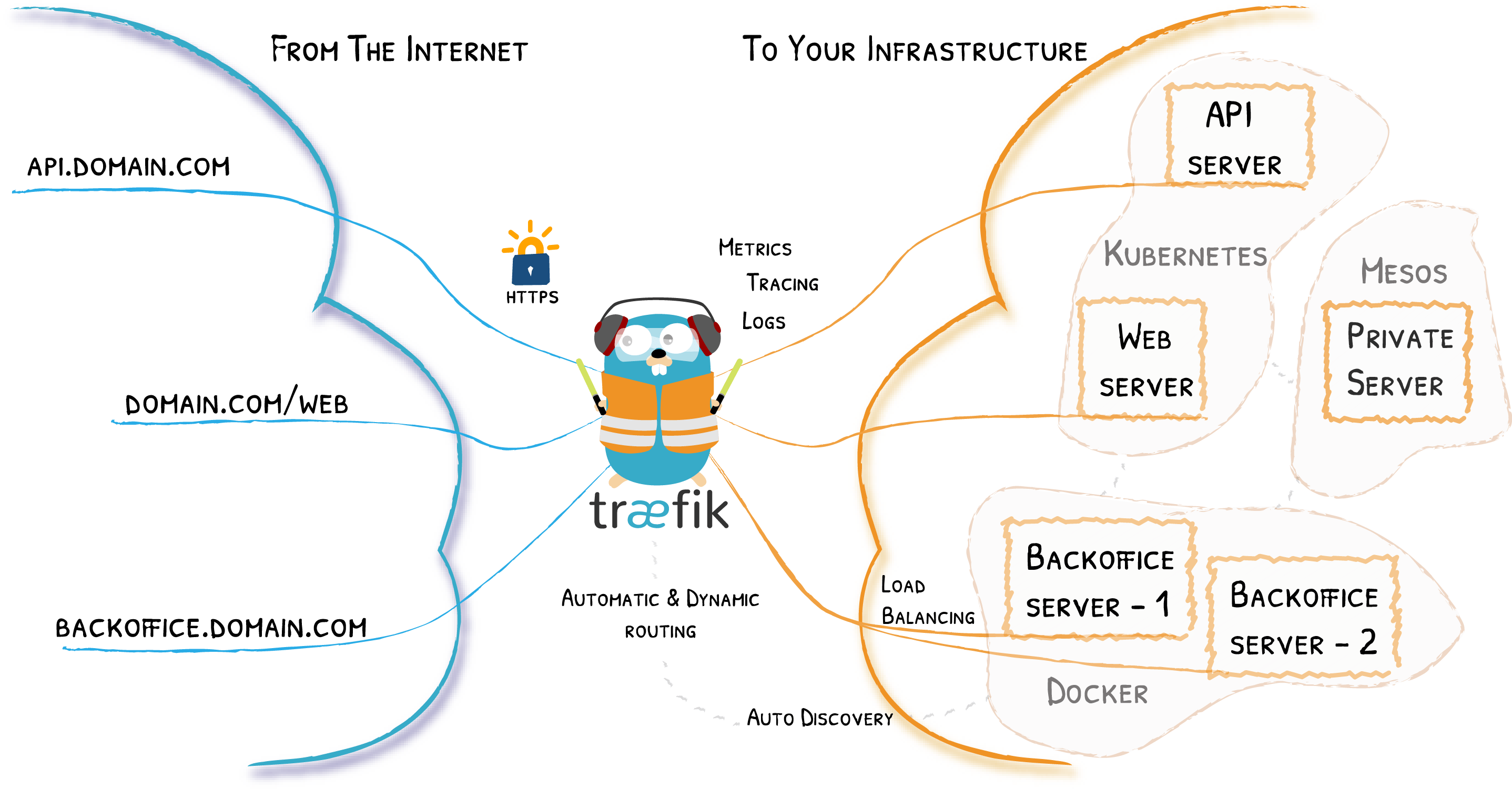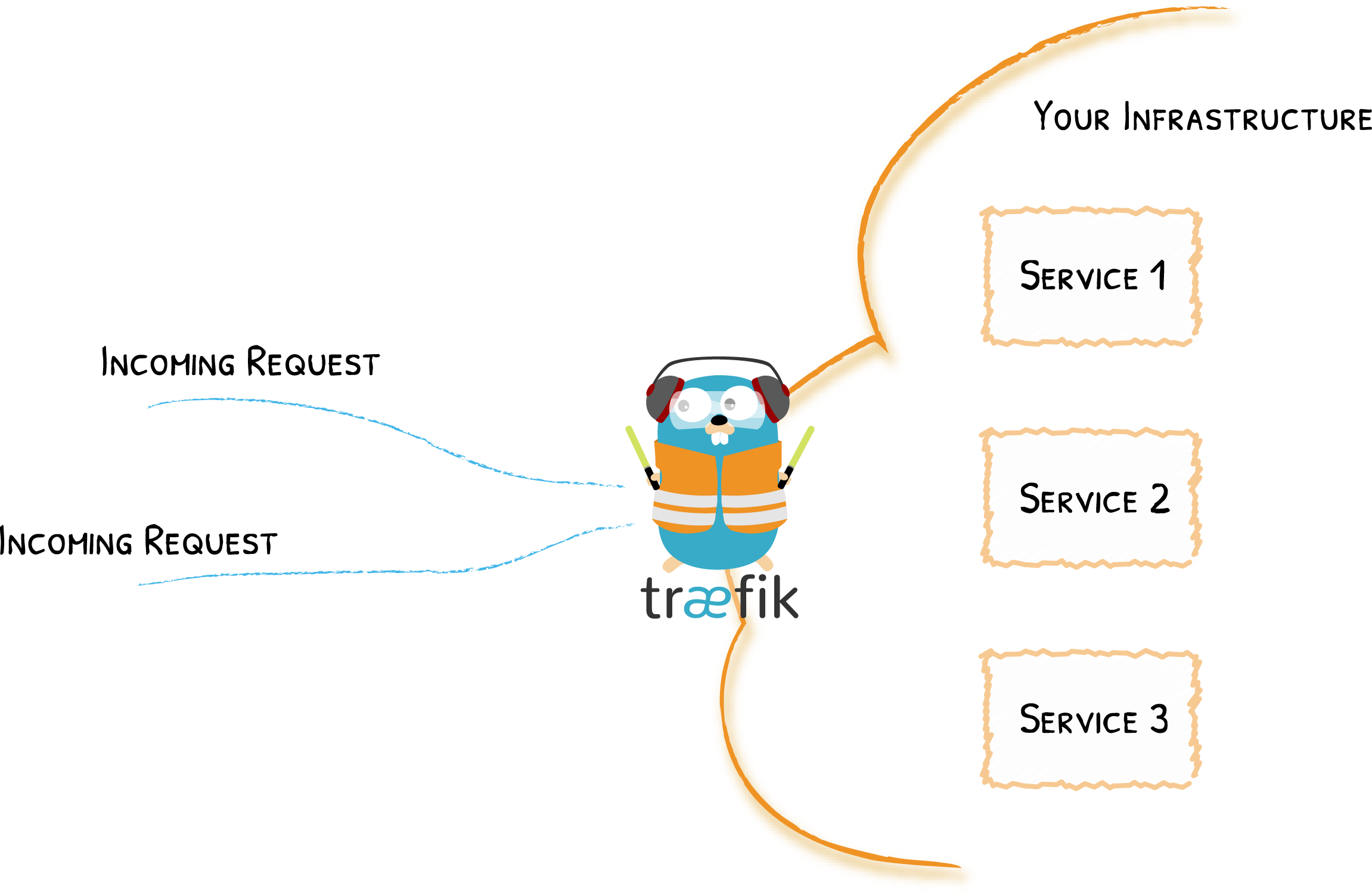Overview of Traefik Reverse Proxy 3.0 & Key Concepts
 Introduction
Introduction
Traefik is an open-source Application Proxy that simplifies the process of exposing and managing services in your infrastructure. It acts as the gateway to your platform, receiving incoming requests and securely routing them to the appropriate services. Traefik is highly flexible and supports dynamic service discovery, automatic routing, and can handle complex routing configurations without requiring manual intervention.
Traefik is based on key concepts like EntryPoints, Routers, Middlewares, and Services, which work together to manage traffic and make your infrastructure more efficient and easier to scale.
Key Concepts in Traefik
-
EntryPoints: These define how traffic enters Traefik. Each EntryPoint specifies a port and whether to listen for TCP or UDP traffic.
-
Routers: Routers match incoming requests with services based on rules like the request's host, path, or headers. Routers act as a bridge between incoming requests and the appropriate service.
-
Middlewares: Middlewares allow you to modify requests and responses as they pass through Traefik. You can apply Middlewares to Routers to add functionality like authentication, rate-limiting, or header modification.
-
Services: Services define how to reach the backend applications that will handle the requests. Traefik forwards the requests to these Services, whether they are running on Docker, Kubernetes, or other platforms.
Traefik as an Edge Router
As an Edge Router, Traefik manages all incoming requests, applying routing logic to determine which service should handle a given request. It can route traffic based on a variety of criteria, such as URL paths, hostnames, headers, and more. This makes Traefik highly effective as the entry point to your infrastructure.


